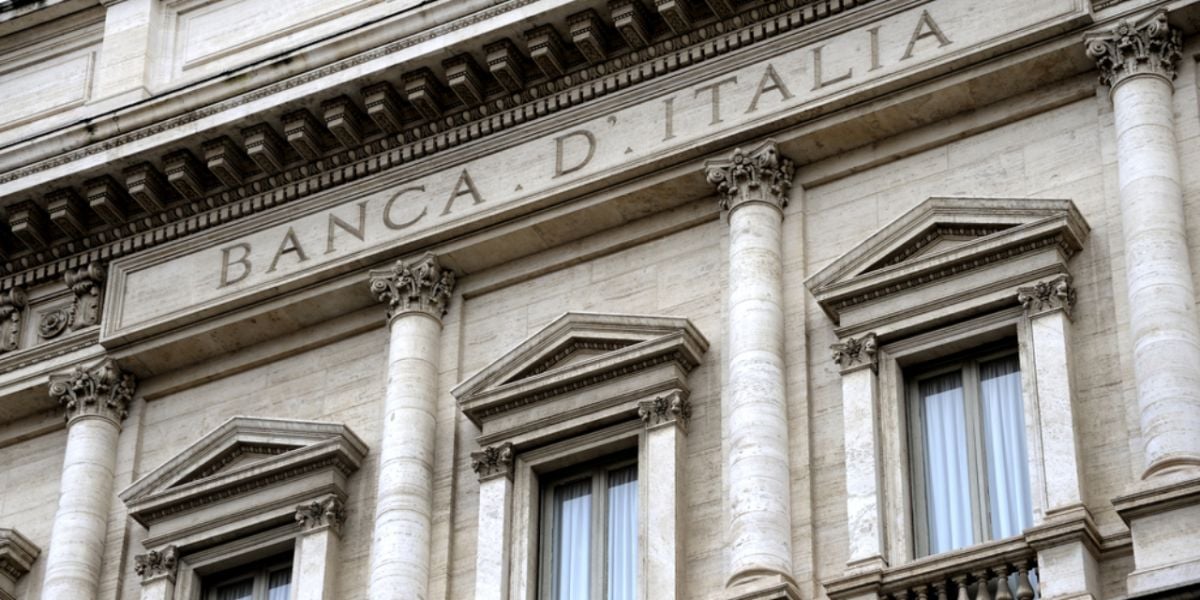
If you are planning to move to Italy, you may need to open a bank account. Often this is even required by the employer to pay your salary if you sign an employment contract. It can also be useful for paying your bills. In this article, we tell you how to open a bank account in Italy, whether you are a resident or a non-resident, and what documents you need to provide in order to do so.
Opening a bank account in Italy is not as complicated as it sounds. Admittedly, the Italian administrative jungle is complex but, if you meet certain eligibility criteria, the procedure for opening an account with a bank is relatively simple.
Opening a non-resident bank account in Italy
As a non-resident, you are allowed to open "conto estero" (non-resident) bank account in Italy. The basic requirements are that the new client must be over 18 years of age, must never have received a formal notice for non-payment, and must never have been declared bankrupt.
In general, to open a bank account in Italy, you are required to have a residential address in the country. In some cases, however, expatriates living abroad for study or work reasons or foreigners who are not residents of Italy and who need a bank account can apply under the following conditions:
- Not to have been registered for at least 183 days at the anagrafe, the civil status office of the town hall ;
- Not to have resided in Italy for at least six months;
- Not have had habitual residence in Italy for at least 183 days.
However, holders of this type of account will only be allowed to carry out certain operations, such as deposits, withdrawals and receipt of their salary or pension payment. You will, of course, receive a debit card to carry out all these transactions.
In order to open a bank account in Italy, you will need to provide the chosen banking institution with the following documents:
- Form provided by the bank, duly completed and signed;
- Copy of an identity document (or passport);
- Copy of the tax code;
- Copy of a residence certificate (not required by all banks).
You can deposit foreign currency or euros into this account but you will need to prove that the money deposited is not subject to tax and that it is not capital income. This can be done by submitting a self-certification to the bank. On the other hand, according to the Agenzia delle Entrate, the Italian tax agency, the bank will levy a 20% tax on the amount transferred if it is capital income or sales income.
Good to know:
Please note that the fees for opening a non-resident current account are generally higher than those for ordinary accounts. This is mainly due to higher fees that may be affected by exchange rate fluctuations if the holder is from outside the eurozone. In addition, Italian banks are required to apply anti-money laundering regulations.
If you wish to open your bank account remotely, you will need to provide a reference to the bank as well as a signature deposited with a notary or lawyer, photocopies of your passport and the euro payment form for opening the account.
Where to open a non-resident bank account in Italy?
Being a specialized banking product, the bank account for non-residents is not offered by all banks. Nevertheless, there's a rising demand, and many more banks are now offering this type of product. Thanks to the current competition among banks in Italy, the banking conditions for all those who want to use this product have also improved.
Some of the banks offering the possibility of opening a non-resident current account are Fineco, Banca Mediolanum, UBI Banca, Banca Popolare Etica, Banca di Credito Cooperativo, Banca Popolare di Milano, Intesa Sanpaolo, BNL and ING.
Opening a resident bank account in Italy
If you live and work in Italy, and establish your residence there, you will undoubtedly need to open a bank account, especially to receive your salary, pay your bills, etc. In this case, you can open an ordinary bank account or a resident account.
Types of current accounts in Italy
The Italian banking system provides different types of current accounts available to all Italian citizens and resident foreigners:
- Ordinary or "à la carte" account: the cost of the current account depends on the number of transactions carried out; the more transactions you carry out, the higher the monthly or annual cost of the account;
- Basic account: this is a current account that only allows you to carry out certain transactions, such as crediting a salary or pension, depositing and withdrawing money, and paying bills, but does not provide for any related financial products;
- Flat rate account: the fee includes certain services which may be unlimited or have a limit on the number of transactions available;
- Conventional accounts: these are specific current accounts that offer discounts and are stipulated with customers who have particular requirements;
- Online current accounts: all these accounts are available online and allow transactions to be carried out via smartphone or computer and do not require the physical presence of the customer in the branch. This type of account is less expensive.
Good to know:
As a resident in I taly, you can open a bank account in your own name or a joint bank account called a conto corrente cointestato.
Beware of international money transfer fees, as they can be particularly high.
In addition to opening a bank account, you can also take out insurance with your bank, including travel insurance.
Documents needed to open a bank account in Italy
In order to open a bank account in Italy, you must be 18 years of age or older. In addition, depending on the banking institution you choose, you will need to provide the following documents:
- a copy of your identity card (and/or passport if you come from a non-EU country);
- a copy of your tax code;
- a copy of your employment contract or salary slip;
- a copy of your residence certificate (or residence permit if you are from a non-EU country).
Good to know:
Some banks ask for original documents as well as copies.
Current accounts may have different interest rates from one bank to another, so it is advisable to compare rates between banks. Banks in Italy range from small national and regional banks to international banks.
BancoPosta, Unicredit, Deutsche Bank Italia, BNL (of BNP Paribas), Monte dei Paschi di Siena, Ubi Banca, Fineco, Banca Mediolanum, and Banca Popolare di Milano are among the most popular banks. Intesa Sanpaolo is another popular bank, especially among expatriates, as it has over 3,700 branches and a multilingual contact center. You can find out more in a study by Mediobanca in 2022 that includes a list of the top 20 Italian banks.
Please note that BancoPosta is a division of the Italian Post Office, which offers current and savings accounts, payment services, loans, insurance and investment services.
There are also online banks that offer free or low annual fee current accounts. These include Hellobank, N26, Hype and Chebanca.
How to open a bank account in Italy
Go to your local branch to open a bank account. You will need to provide the documents mentioned above in duplicate if it is a joint account.
It is also possible to open a bank account online. Most banks nowadays offer this service. You will need to scan and attach the required documents to the bank account application form. Ask your bank or check out its website to find out how to send the form. Be aware that you will probably need a device that allows you to sign electronically.
Bank account fees in Italy
Banks do not usually charge a fee for opening a current account. The price of transactions and account management will then depend on the type of account chosen by the customer. According to a study by the Bank of Italy in 2021, a standard bank account costs an average of €90 per year, but depending on the credit institution and the type of account, this amount could reach €170.
In Italy, there are generally three types of fees related to the management of a bank account:
- the stamp duty: required by law and equal for each type of account;
- fixed fees: including card fees, annual account management, and costs incurred by the bank for sending documents and information material to the customer. Each bank and each type of account has different costs;
- variable costs: this is the part that varies according to the operations carried out, which may be withdrawals from branches of other banks, transfers, payments abroad, etc.
In addition to this, there is the sending of account statements and communications unless you have opened an online bank account.
Payment and withdrawal cards in Italy
All current accounts in Italy come with bank cards, usually a debit card. But there are different types of bank cards in Italy. Here are the main types of bank cards you can use:
Credit card (Visa, Mastercard, American Express, etc.)
The credit card is issued by the bank based on a contract and allows you to make purchases and cash withdrawals from ATMs. This operation constitutes an advance of funds and entails the payment of interest. The amounts spent are usually debited once a month from your current account, but direct payment is also possible. If arranged, cards can also be used to make recurring payments (direct debits).
Debit card
The debit card is issued by the bank where you open a current account and is linked to your IBAN. Unlike a credit card, transactions are debited directly from the holder's account, and funds must be present for the transaction to be executed. With this card, you can also pay bills, top up your phone, or access other services at ATMs.
Prepaid card
A prepaid card allows you to make payments and withdrawals from a sum of money that you have pre-deposited with the issuer. To have a prepaid card, it is not necessary to have a current account, but if you have one, you can choose to associate it with the IBAN. This type of card can be either reloadable or non-reloadable. The payments and withdrawals you make reduce the amount of money you put in until it runs out.
Regarding cash withdrawals (Bancomat), it's worth noting that Italy has a vast network of ATMs. In most of them, the daily withdrawal limit goes from €250 to €1,000, depending on the bank that issued your card.
Bank fees and charges in Italy
Like everywhere else, bank charges are unavoidable in Italy, especially if you have not signed up for an online account with the possibility of autonomy in the various operations. Currently, banks set the fees for ATM withdrawals. It generally varies between 0 and 3 euros depending on the bank, the type of contract signed, but also the ATM chosen.
Fees are lower if the ATM belongs to the bank that issued the card, but many banks charge fees for withdrawals below a certain threshold, e.g., EUR 100, even in ATMs belonging to the same group.
Fees are higher when the transaction takes place at ATMs belonging to another bank because of the commission the bank has to pay to the institution dispensing the cash (in addition to the commission already charged by the issuing bank).
Other bank charges to consider are: international withdrawal charges, international transfer charges, and interest paid on cheques (quarterly).
What is the banking sector like in Italy?
The Italian banking system plays a key role in the finances of the production system. Although they are not among the leading employers in Italy, banks are the main channel for external financing of companies, accounting for 64%.
Over the last two decades, the Italian banking system has undergone profound changes, with a gradual reduction in the number of credit institutions in the country. The financial and economic crisis (2008-2009) and the subsequent sovereign debt crisis (2011-2012) in Europe, not to mention Covid, have helped to accelerate these changes.
By 2022, Italy had returned to its pre-pandemic GDP levels and was growing faster than the other major European countries (3.9% compared to 3.4% for the euro area). However, by 2023, rising costs, especially financial ones, are causing a sharp slowdown in production and consumption. Italy's public debt now represents around 145% of GDP, according to the Bank of Italy, compared to 93% for the Eurozone.
Useful links :
List of the main banks in Italy
We do our best to provide accurate and up to date information. However, if you have noticed any inaccuracies in this article, please let us know in the comments section below.











